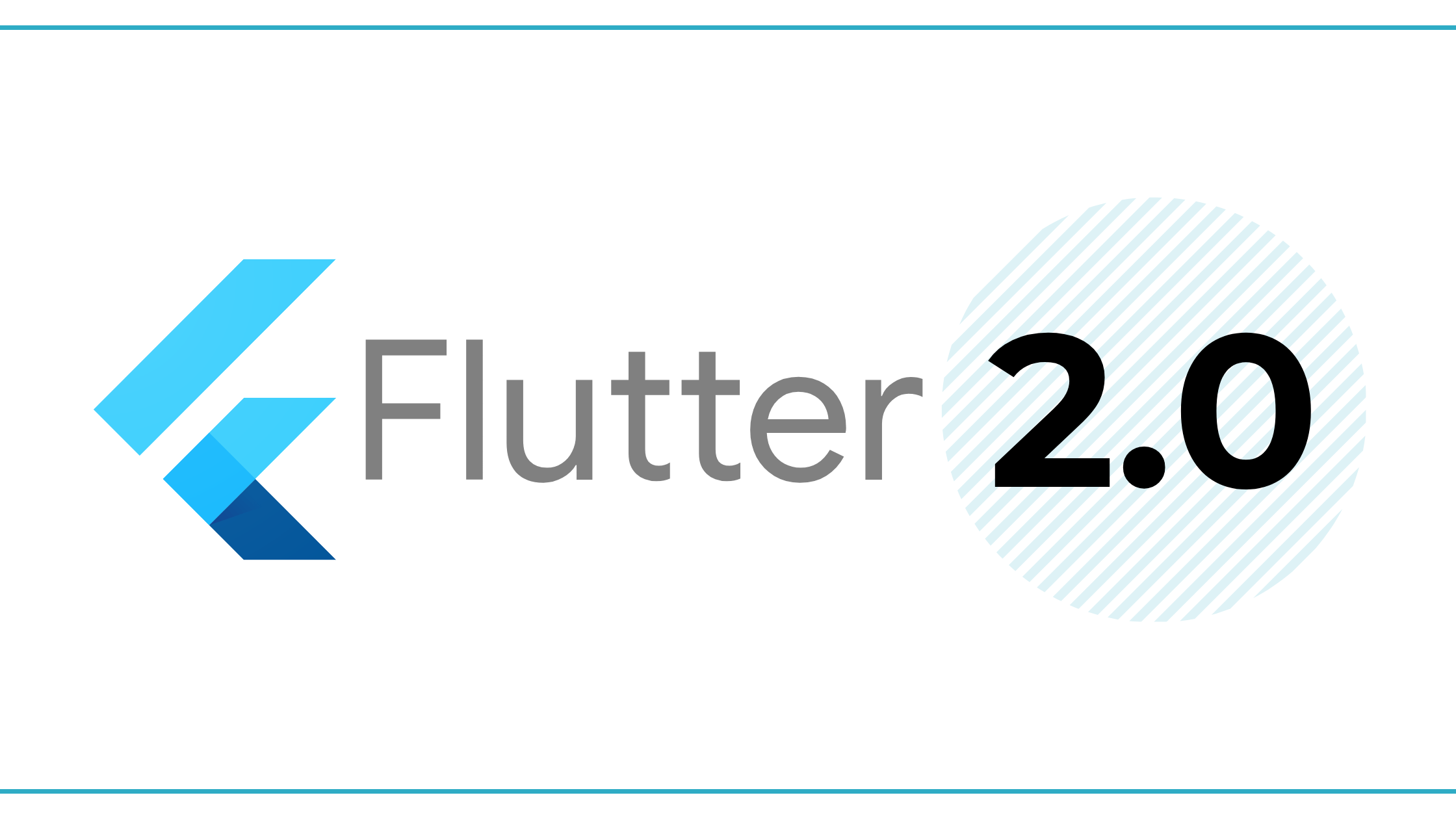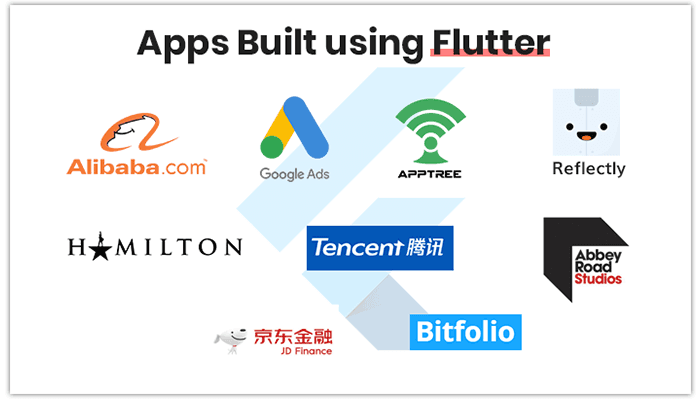In the past two years, over 150K flutter applications have positioned themselves in the Google Play Store. And that’s the reason why this open-source app development framework is loved and applauded by millions of developers. Needless to say, the launch of Flutter 2.0 is something the entire community is excited about at the same time waiting for long.
The upgraded version Flutter 2.0 has further established Flutter as a complete UI toolkit that is strong, flexible, and portable enough to build stunning apps for any platform – Web, mobile, desktop, or even the emerging tech such as foldable devices.
Apart from this, the stable updated version boasts around closing almost 25K issues. So, what’s in store with Flutter 2.0?
Read ahead to find out.
What was Flutter 1.0 Capable of doing?
Flutter 1.0 was basically Google’s open-source framework that is used to build Android and iOS applications. However, the open-source framework was unable to run on desktop, mobile devices, and embedded systems. Later on, Google recognized the issue and updated the framework by adding more features on the web and mobile, and with further updates, Flutter 1.0 was capable of;
- 2D dimensions to create vector animations.
- Increased Dart 2.1 speed and flexibility
- Powerful composition capabilities
- Leveraging Dart 2.1 version, flutter provided faster type checks and smaller code size.
- Offering pixel-perfect experience along with a comprehensive set of widgets.
What has evolved with the release of Flutter 2.0?
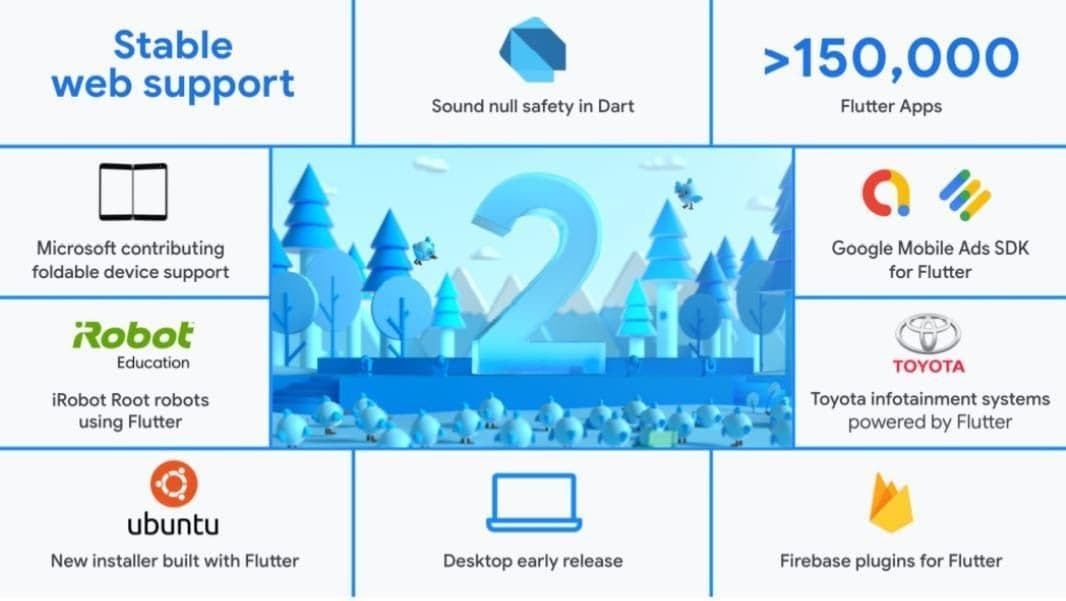
Do you know;
Just by switching to Flutter framework, Google Pay’s mobile app developers were able to eliminate 50% of their code from the codebase – making the app lighter, efficient and faster?
Compared to Flutter 1.0, Flutter 2.0 is a more versatile and efficient framework to build fast, portable and beautiful applications for the innumerable operating system including Linux, macOS, Android, iOS, and Windows. It now operates on multiple web browsers including Firefox, Safari, Chrome, and Edge.
Achieving huge achievement in Flutter 1.0, flutter app developers were eagerly waiting for the stable release of the UI toolkit. Its single codebase allows you to make multiple applications. Be it smart homes, televisions, or cars, Flutter can be used to build complex and integrated applications.
Uplifting platform restrictions, Flutter 2.0 has become a portable framework to unleash its full potential.
In the Words of Google,
“Our goal is to fundamentally shift how developers think about building apps, starting not with the platform you’re targeting but rather with the experience you want to create. Flutter allows you to handcraft beautiful experiences where your brand and design come to the forefront. Flutter is fast, compiling your source to machine code, but thanks to our support for stateful hot reload, you still get the productivity of interpreted environments, allowing you to make changes while your app is running and see the results immediately.”
What’s new with Flutter 2.0?
1. Flutter for Web
Flutter has faced a few obstacles to the web. In order to create a responsive user experience, widgets need to be developed. Some additional functionality needs to be implemented like hover to enable a smooth user experience. Dart was originally meant to replace JavaScript and instead, the dart2js compiler has been used widely.
Since the web is a tricky platform to deal with, Flutter 2.0 is now a part of the stable channel. It simply means that the beta version is no longer available and we’ve the stable version which focuses solely on performance and render fidelity. Flutter now consists of rich platform APIs with 2D and 3D graphics and a flexible layout.
2. Acknowledgment of Web Performance
One of the best pieces of news for developers in this segment is the enhancement of web performance. Now, flutter for the web can display the app in a browser by;
- Rendering using CanvasKit. Though heavy, it gives impeccable performance when there’s a lot on screen.
- Rendering using CSS, Canvas, and HTML. It will allow a user to download and load faster.
HOW TO BUILD WEB APPS USING FLUTTER?
3. Sound Null Safety
Sound Null Safety – One of the most notable additions to the Dart language. This feature allows developers to identify between nullable types and non-nullable types. This helps developers to prevent null error crashes during the development period.
By default, the non-nullable type is checked true which enables static checks and compiler optimizations to assure that null-dereference errors won’t happen at runtime as they will be spotter earlier when the app is getting compiled and will be fixed too.
4. Flutter for Desktop
This is indeed one of the major changes introduced with Flutter 2.0. The desktop status is now stable as compared to the previous version in the Alpha stage.
Flutter app development for Desktop now also supports keyboard shortcuts that leverage the feel of using Native applications of Linux, Windows, or macOS. It’s an important change from the user’s perspective. So, whether they’re using a mobile, laptop, or browse windows, the web experience will remain consistent. It also offers interactive scrollbars too.
You know what’s the best part of Flutter 2.0? It triggers a wide range of use cases. modern world. Flutter 2.0 can make the world smarter by getting embedded in cars, smart Tvs and home appliances.
5. Web App Features & Widgets
With the latest update, Flutter 2.0 supports multiple web-specific features and Flutter widgets including web-app deep linking, hyperlink widget, text auto-fill, custom URL strategies, PWS and more. This way, developers can make the best use of the web-specific features to build mobile apps.
6. Flutter for Mobile – Foldable device
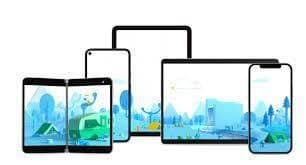
The latest feature of a mobile app to hit the market is termed “foldable phones”. Such phones not only allow users to run applications on two screens but also help them make use of tool screen design patterns like two page, dual view, list-details, companion pane, and extended canvas. Such a feature is introduced so as to boost productivity while working on the device.
Flutter 1.0 didn’t accommodate foldable displays but Flutter 2.0 does. This way, developers can take advantage of dual-screen devices or foldable phones to build apps regardless of the platform selection.
7. Google Mobile Ads
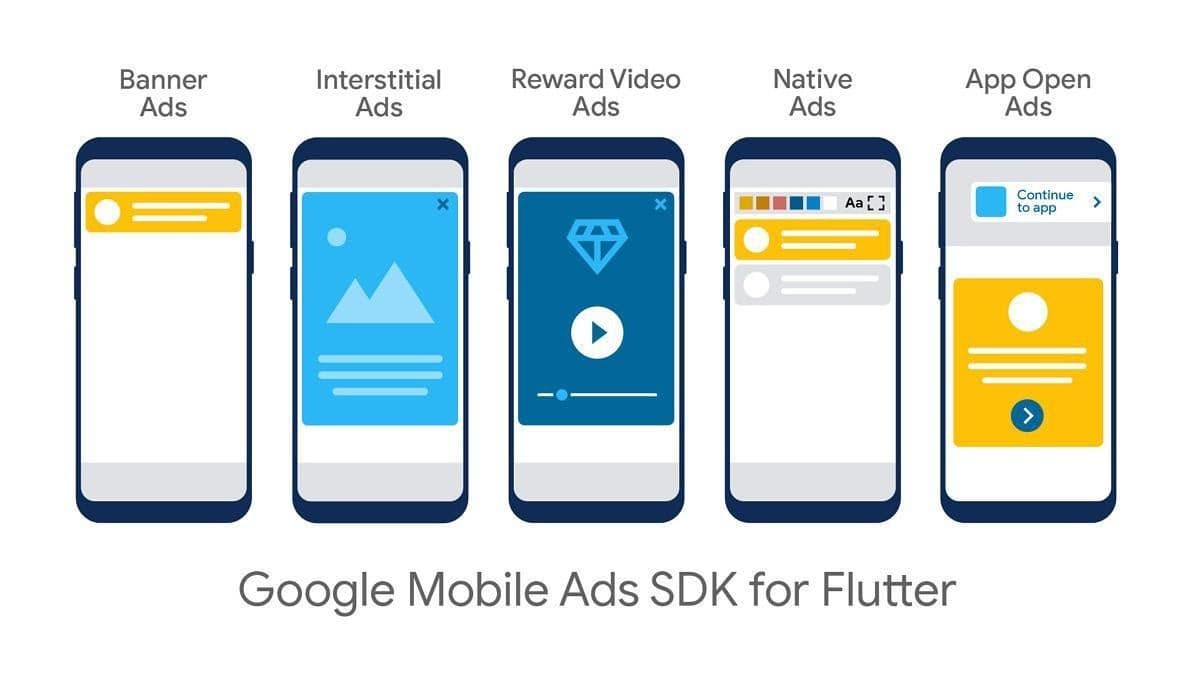
The latest Flutter 2.0 has introduced us to the Google Mobile Ads SDK beta version.
So, what can be expected with this Mobile Ad beta version?
The beta version ( which is still in validation mode) will aid developers to indulge native ads and inline banners in the pre-existing overlay formats. It will allow developers to easily customize advertisements using Admob and Ad Manager.
8. Platform Adaptive apps
Though Flutter now supports multiple operating systems including Linux and macOS,
Still, developers are often wondering;
How to write an app that works seamlessly across screen sizes – Small, medium, or large?
Apart from screen size, developers do wonder about different variables like desktop, mobile, and web and input modes like mouse, touch, keypad.
In order to find answers to the above questions, watch out the Flutter Folio Sample video below:
How does Flutter 2.0 strengthen its iOS support?
1. Autocomplete and ScaffoldMessenger
- The launch of the latest Flutter 2.0 allows developers to get access to completely new widgets: AutoComplete and Scaffold Messenger.
- Talking about AutoCompleteCore, it represents the minimal functionality needed to get auto-complete functionality installed in your flutter app. Staying in demand for a long time, this feature allows integrating auto-complete features in your native apps built using Flutter.
- If we talk about ScaffoldMessenger, it helps in the development of SnackBar to perform actions between Scaffold transitions.
2. Multiple Flutter instances with Add-to-App
- Flutter has become the premium choice for a majority of the developers as it allows them to reuse the same code to build apps for both Android and iOS.
- Furthermore, with the Add-to-App feature, you can add Flutter to an existing application. This feature saves ample amount of time since it saves the native code base that helps developers to execute code for both platforms.
3. FlutterDevTools
- The launch of the Flutter 2.0 release has renamed the community from DevTools to FlutterDevTools especially when it’s about debugging.
- The new FlutterDevTools will enable Visual Studio Code, IntelliJ, and Android Studio that will help developers to debug the code and checkout exceptions. Furthermore, the new FlutterDevTools has the ability to identify images with higher resolution.
Emerging use cases with Flutter 2.0
1. Ubuntu and Flutter 2.0
During the release of Flutter 2.0, it was announced that Canonical- The Ubuntu creator has been contributing to the development of Flutter 2.0. So, you can say that for Ubuntu applications, default choice = Flutter framework. In fact, you’d be surprised to hear that the Ubuntu installer was converted to Flutter.
2. Toyota and Flutter shake hands
Toyota changes its development approach to unleash next-gen vehicles. The company announced that as a part to build next-gen vehicles, the infotainment system will be backed by the Flutter framework. This has built a lot of credibility in favour of flutter app development. Additionally, it will invite a larger community to discuss the problems and use cases in newer technologies.
What about its community support?
Flutter development framework cherishes more stars on GitHub as compared to React Native framework. When it comes to the mobile app development ecosystem, Flutter has gained immense popularity in building scalable apps in a quicker way. Powered by Google, the Flutter community is sure to grow in the near future. The release of Flutter 2.0 has opened new gates for cross-platform development since larger corporations and brands are coming to the forefront and joining hands with Google for Flutter 2.0 app development.
Why Flutter 2.0 seems to be the most promising framework for business strategy?
When choosing a framework for business, it should meet several business criteria including high performance, platform stability, further improvement scope, and more. If any of the above criteria is not considered, choosing such a framework proves to be a risky decision.
Flutter minimizes these risks by covering all demanded aspects. Incorporating flutter for app development gives you abundant benefits compared to native software solutions. App development with flutter claims to be speedy, cost-effective, and offers better performance. Though its ecosystem is relatively small and the community is not as expanded as React Native, however, it is constantly growing. This key point makes Flutter app development a viable option for startups since it works directly with canvas and doesn’t require bridges to access services.
Overall, the Flutter framework pretends to be one of the most promising options for a business strategy that astonishes you with instant results and guarantees success in the future as well.
Last but not least: How much does it cost to build a flutter app in 2022?
Well, flutter app development is a complex and diversified process that is influenced by multiple factors which makes it difficult to estimate rates.
However, considering the common rate standards, Indian companies leverage the cheapest solution starting from $10/hour. If we consider American or Canadian-based companies, these agencies charge hourly rates up to $150-$200 per hour. Talking about the European companies, they aren’t homogeneous. Western European companies charge somewhere between $100 to $150 per hour while eastern European companies charge around $25 to $50 per hour.
As per my opinion, Flutter being an open-source technology, a lot of free resources are available to use which reduces operational expenses to a great extent. It eliminates the need to buy licensed tools too which is an expensive affair. So, whenever you think of hiring a flutter app developer, prices can be even lower. And, this makes Flutter even more advantageous.
Conclusion
Flutter is surely going to accommodate more technologies as more use cases emerge. Google is keeping its eye on improving user behavior and that’s why upgrades in Flutter have been noticed in the last two years. This gives app development companies an opportunity to develop applications continuously to support multiple platforms and OS to delight end-users.
Today users are ever-evolving with the emerging technologies and their tolerance for a bad or average application offering less to null needed services are declining. So, if you’re a business whose main focus is to delight its user with an interactive and intuitive mobile app, you must adapt with Flutter 2.0 for app development.
At Solute Labs, our development experts are well-versed with the latest tech standards, toolkits, and frameworks. If you’re looking to build a kickass next-gen business app, connect with us here.
